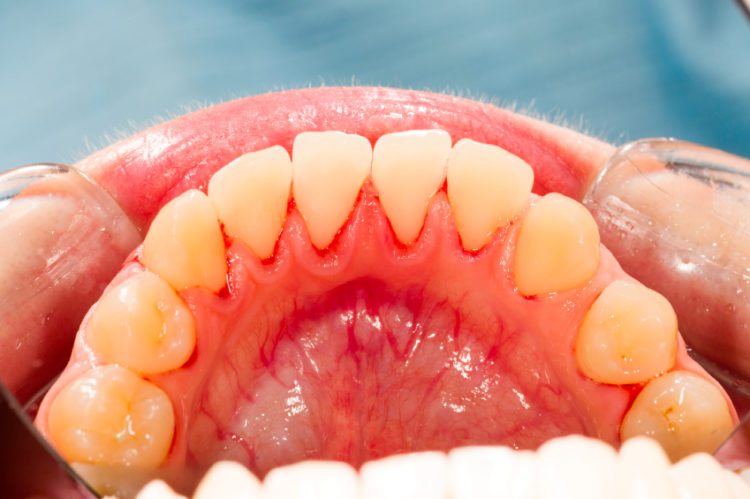
Gum disease is a potentially dangerous condition that affects nearly half of Americans. But would you even realize if you had it? Here are several key symptoms of gum disease and how to treat it with a new technology called “Periolase.”
If at first the symptoms we mention are minor, start by improving your dental habits. Chances are you haven’t been flossing every day or brushing twice daily. Often, simply improving your dental hygiene is enough to reverse the symptoms of minor gum disease.
If, however, you notice excessive bleeding, loose teeth or you experience continuing problems despite improved dental hygiene, it may be a sign of a serious problem, called Periodontitis.
In that case, many dentists will recommend gum surgery. However, we prefer a new laser technology called Periolase, which is a much less invasive alternative to surgery. But before describing that procedure, here are the symptoms to look out for:
7 Symptoms of Gum Disease
- Pervasive bad breath
- Red or swollen gums
- Tender or bleeding gums
- Painful chewing
- Loose teeth
- Sensitive teeth (to hot or cold)
- Receding gums or teeth that appear longer
Are these symptoms minor? Consider yourself lucky, and start brushing and flossing now! If they progress into Periodontal disease, more intensive treatment, like Periolase, will be required.
Periolase – A Better Way to Treat Gum Disease
Gum surgery is the traditional method of treating Periodontal disease. But while this procedure has been proven effective, it’s quite invasive, including slicing, sutures, and a lengthy/painful recovery time.
The Periolase Millennium Dental Laser instead relies on a tiny laser fiber – approximately the thickness of three hairs – to treat gum disease without the invasiveness of surgery.
What does a noninvasive alternative mean for you? Here are just three of the many benefits that Periolase provides over gum surgery.
- Better results – At the end of the day, results are what matter most. We’ve found that Periolase creates longer-lasting results compared to surgery. In fact, 98 percent of patients remain stable at least five years after the procedure.
- Shorter recovery time – It can take between 2-4 weeks to fully recover from gum surgery, and often includes swelling and pain. Conversely, patients typically recover from Periolase in less than 24 hours! Many patients are even able to return to work immediately after the procedure.
- Shorter procedure – Surgery generally requires four, hour-long sessions as well as subsequent visits for suture removal and check-ins. Periolase only requires two, 2-hour visits to complete, as well as a couple quick follow-up appointments.
Although we’re happy to see advancements in treating gum disease, we’d prefer you never need it. Keep an eye out for the seven symptoms of gum disease. If you spot any of them, early prevention is key to avoiding more serious diseases – and treatment – down the road!
